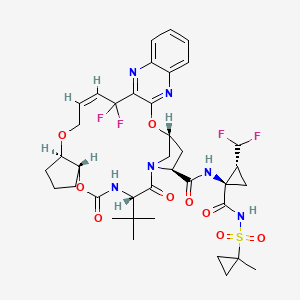Wednesday, November 19, 2025
FDA Approves Khindivi (hydrocortisone) Oral Solution for Pediatric Patients with Adrenocortical Insufficiency
Tuesday, October 1, 2024
FDA Approves Xromi (hydroxyurea) Oral Solution for Use in Pediatric Patients with Sickle Cell Anemia
Sickle cell anemia is caused by an abnormal version of hemoglobin called hemoglobin S, which leads to sickle-shaped red blood cells that can form painful clumps inside the blood vessels. These painful episodes are called sickle cell crises, and are one of the most common and distressing symptoms of sickle cell disease.
Hydroxyurea has been shown to reduce the frequency of painful episodes associated with sickle cell disease. It is thought to work by increasing levels of hemoglobin F (also called fetal hemoglobin because it is present in newborn babies) to make the red blood cells bigger, rounder, more flexible, and less likely to turn into a sickle shape.
Hydroxyurea was first approved in 1967 in an oral capsule formulation as a cancer treatment and has been used by doctors to treat sickle cell anemia since the 1980s. It was approved by the FDA for treating adults with sickle cell anemia in 1998, and children in 2017.
Xromi is supplied as a strawberry-flavored oral solution containing 100 mg/mL hydroxyurea. The Xromi package contains two dosing oral dosing syringes (a red oral dosing syringe graduated to 3 mL and a white oral dosing syringe graduated to 12 mL) for accurate measurement of the prescribed dose.
FDA Approves Xromi (hydroxyurea) Oral Solution for Use in Pediatric Patients with Sickle Cell Anemia
Monday, September 23, 2024
FDA Approves Libervant (diazepam) Buccal Film for the Treatment of Seizure Clusters in Pediatric Patients Ages 2-5 Years
Aquestive Therapeutics, Inc. (NASDAQ: AQST) (“Aquestive” or the “Company”), a pharmaceutical company advancing medicines to bring meaningful improvement to patients' lives through innovative science and delivery technologies, today announced the U.S. Food and Drug Administration (FDA) has approved Libervant™ (diazepam) Buccal Film for the acute treatment of intermittent, stereotypic episodes of frequent seizure activity (i.e., seizure clusters, acute repetitive seizures) that are distinct from a patient’s usual seizure pattern in patients with epilepsy between 2 to 5 years of age.
“We are thrilled to have received FDA approval for Libervant™ in patients between the ages of two and five,” said Daniel Barber, Chief Executive Officer of Aquestive. “Patients have been waiting years for Libervant, the first and only FDA approved orally-administered rescue product for the treatment of seizure clusters. Our first priority is to provide and maintain availability of Libervant to the intended patient population. I am pleased to announce that we are currently able to accept and fill non-Medicaid prescriptions. We expect to expand our distribution capabilities over the coming weeks and months. I am also pleased with our continued track record of success with the FDA. We respect the FDA’s mission to protect public health and we will always seek to partner with the FDA wherever possible.”
“Libervant provides a new way to deliver diazepam for the treatment of acute repetitive seizure emergencies in children aged two to five,” said Michael Rogawski, M.D., Ph.D, distinguished professor of neurology and pharmacology, University of California, Davis, “The film is placed onto the buccal mucosa inside the cheek where it adheres firmly and dissolves quickly, delivering a consistent dose of diazepam. Studies show that the film is easy to administer and performs reliably in children as young as 2 years of age. Libervant is packaged in a compact foil pouch that is convenient to carry so that the treatment can be available wherever these children may be.”
In 2023, over 55,000 prescriptions were filled for patients between the ages of 2 and 5. This was an increase of 10.8% over the previous year and an average increase of 9.3% over the last three years for this patient population. Over 90% of filled prescriptions in 2023 for this patient population were for diazepam rectal gel. Prescription writing for this indication is highly concentrated among pediatric epileptologists and pediatric neurologists.
Monday, January 18, 2021
FDA Approves Sesquient (fosphenytoin sodium) for the Treatment of Status Epilepticus in Adult and Pediatric Patients
Sedor Pharmaceuticals, LLC (Sedor) announced the U.S. Food and Drug Administration (FDA) spproval of Sesquient (fosphenytoin sodium for injection) for the treatment of status epilepticus in adult and pediatric patients.
According to Neurocritical Care Society Guidelines, status epilepticus, which is classified as a single epileptic seizure lasting more than five minutes or two or more seizures within a five-minute period, must be treated quickly since irreversible brain damage or death may result if cessation of seizure is not achieved within 60 minutes of onset. Ready-to-dilute and room temperature stable, Sesquient is the only FDA-approved fosphenytoin that allows point-of-care storage, as well as fast and efficient administration in emergency rooms, intensive care units, first responder vehicles, and long-term care facilities, where serial seizures such as status epilepticus are most commonly treated.
“Status epilepticus is associated with irreversible neurologic damage and death, both of which largely depend on the seizure duration before initial treatment,” stated Barry Frankel, Chief Business Officer and co-founder of Sedor. “At some hospitals, it can take up to 30 minutes to get a status epilepticus drug from the pharmacy to the point of care in the ER to treat a patient. Sesquient – the first and only FDA-approved room temperature stable fosphenytoin – could help health care providers quickly treat status epilepticus patients and potentially reduce hospital costs associated with this condition.”
“This is an important milestone for Sedor Pharmaceuticals and opens a significant global market for the company. As our first NDA approved drug, Sesquient validates our business model of efficient development of critical care hospital injectable products,” added John Sedor, Chairman, CEO and co-founder of Sedor. Mr. Sedor added “While Sesquient is available in pre-filled liquid vials, this is a multi-dosage platform which we believe will be followed by a pre-filled IV bag. With this achievement completed, we are turning our focus to the development of our second product, Meloxicam for injection solubilized with betadex sulfobutyl ether sodium, for the potential treatment of acute post-surgical pain.”
Sedor is actively engaged in discussions to license the rights to Sesquient for North America, Europe, and other territories except for the Peoples Republic of China, where it has already been successfully licensed. Concurrently, Sedor is in discussions on securing capital to retain North American rights and commercialize the product.
Thursday, January 16, 2020
FDA Approves Katerzia (amlodipine) Oral Suspension for Pediatric Patients 6 Years of Age and Older

https://en.wikipedia.org/wiki/Amlodipine
Thursday, October 10, 2019
FDA Approves Victoza (liraglutide) for the Treatment of Pediatric Patients 10 Years or Older with Type 2 Diabetes
“The FDA encourages drugs to be made available to the widest number of patients possible when there is evidence of safety and efficacy,” said Lisa Yanoff, M.D, acting director of the Division of Metabolism and Endocrinology Products in the FDA’s Center for Drug Evaluation and Research. “Victoza has now been shown to improve blood sugar control in pediatric patients with type 2 diabetes. The expanded indication provides an additional treatment option at a time when an increasing number of children are being diagnosed with this disease.”
Monday, October 7, 2019
FDA Approves Fragmin (dalteparin sodium) as First Anticoagulant for Venous Thromboembolism in Pediatric Patients

Wednesday, July 3, 2019
FDA Approves Mavyret (glecaprevir and pibrentasvir) as First Treatment for All Genotypes of Hepatitis C in Pediatric Patients

 Pibrentasvir
Pibrentasvir“Direct-acting antiviral drugs reduce the amount of HCV in the body by preventing the virus from multiplying, and in most cases, they cure HCV infection,” said Jeffrey Murray, M.D., M.P.H., deputy director of the Division of Antiviral Products in the FDA’s Center for Drug Evaluation and Research. “Today’s approval represents another treatment option for children and adolescents with HCV infection, but for the first time, in all genotypes of HCV.”




